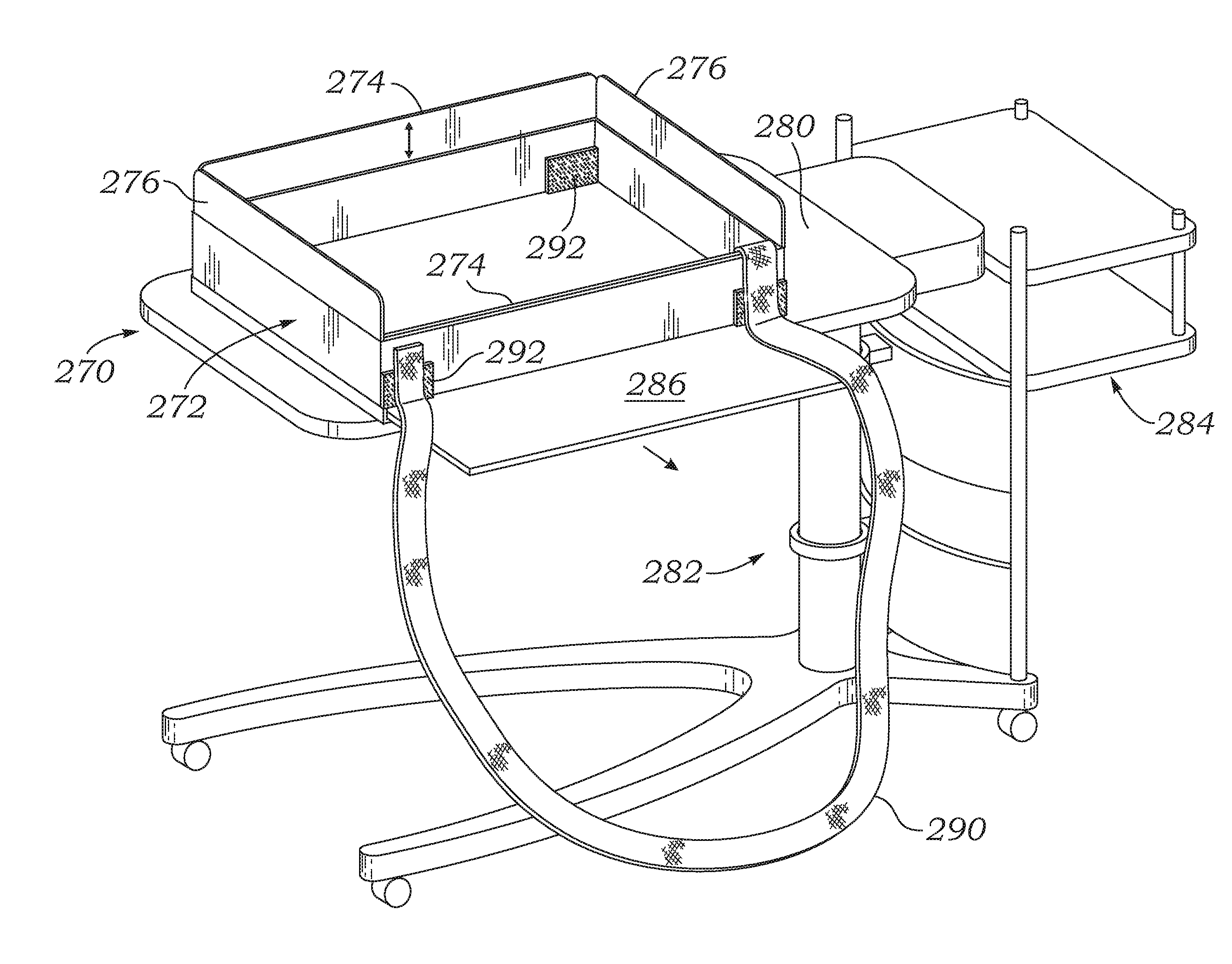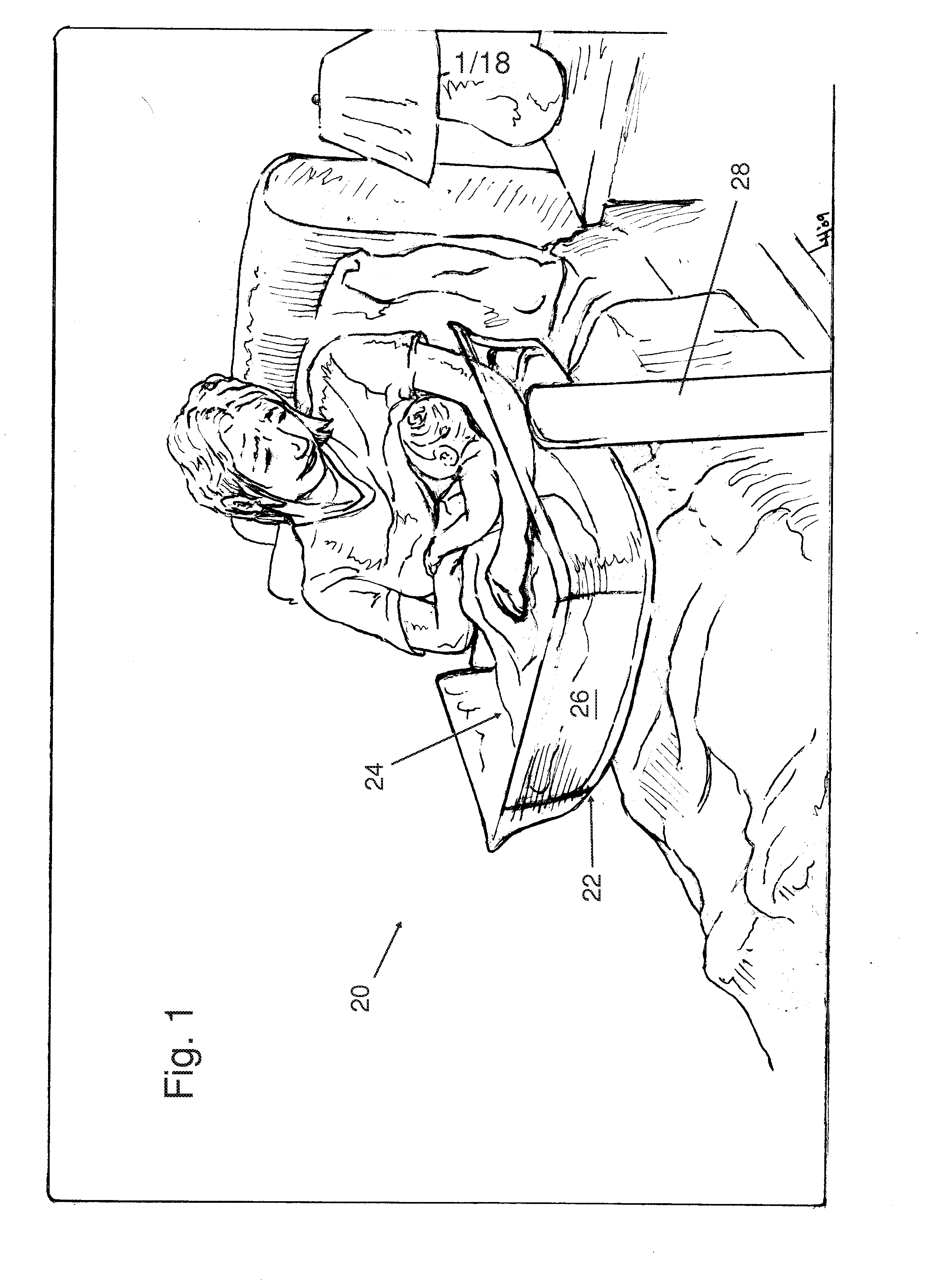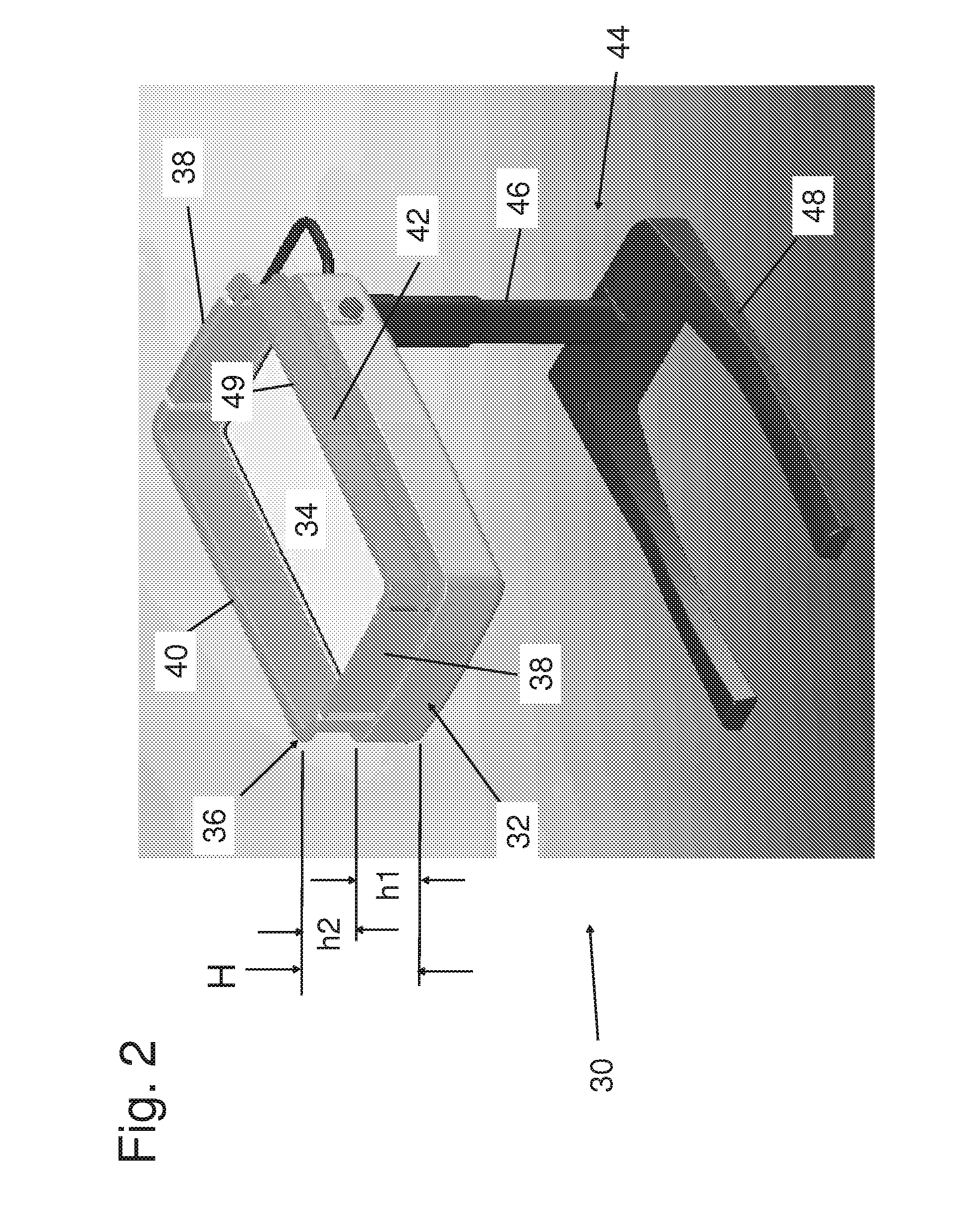Easy-access safety bassinet
a safety and easy-access technology, applied in the field of bassines, can solve the problems of increased the chance of a mother falling asleep with her infant, postpartum depression and anxiety, and fatigue and exhaustion
- Summary
- Abstract
- Description
- Claims
- Application Information
AI Technical Summary
Benefits of technology
Problems solved by technology
Method used
Image
Examples
Embodiment Construction
[0043]FIG. 1 illustrates an exemplary over-the-bed bassinet 20 that can be used to provide ergonomic support for a mother while she is breast feeding her baby. The bassinet 20 is desirably able to support up to 500 pounds, to withstand the weight of someone leaning heavily on it and provide a generous margin of safety. The mother is shown holding her newborn and using the bassinet to support her arms while nursing the baby. In the event the mother falls asleep while nursing, and the mother's arms that are holding the newborn relax, the newborn will remain on a sleeping platform of the bassinet, and a protective barrier will automatically be restored to prevent the baby from rolling out of the bassinet.
[0044]The bassinet 20 includes a frame 22 on which is mounted a sleeping platform 24 surrounded by an upstanding enclosure 26. Several different types of enclosures are described herein, and others are contemplated. The various enclosures present a barrier to an infant rolling off the ...
PUM
 Login to View More
Login to View More Abstract
Description
Claims
Application Information
 Login to View More
Login to View More - R&D
- Intellectual Property
- Life Sciences
- Materials
- Tech Scout
- Unparalleled Data Quality
- Higher Quality Content
- 60% Fewer Hallucinations
Browse by: Latest US Patents, China's latest patents, Technical Efficacy Thesaurus, Application Domain, Technology Topic, Popular Technical Reports.
© 2025 PatSnap. All rights reserved.Legal|Privacy policy|Modern Slavery Act Transparency Statement|Sitemap|About US| Contact US: help@patsnap.com



